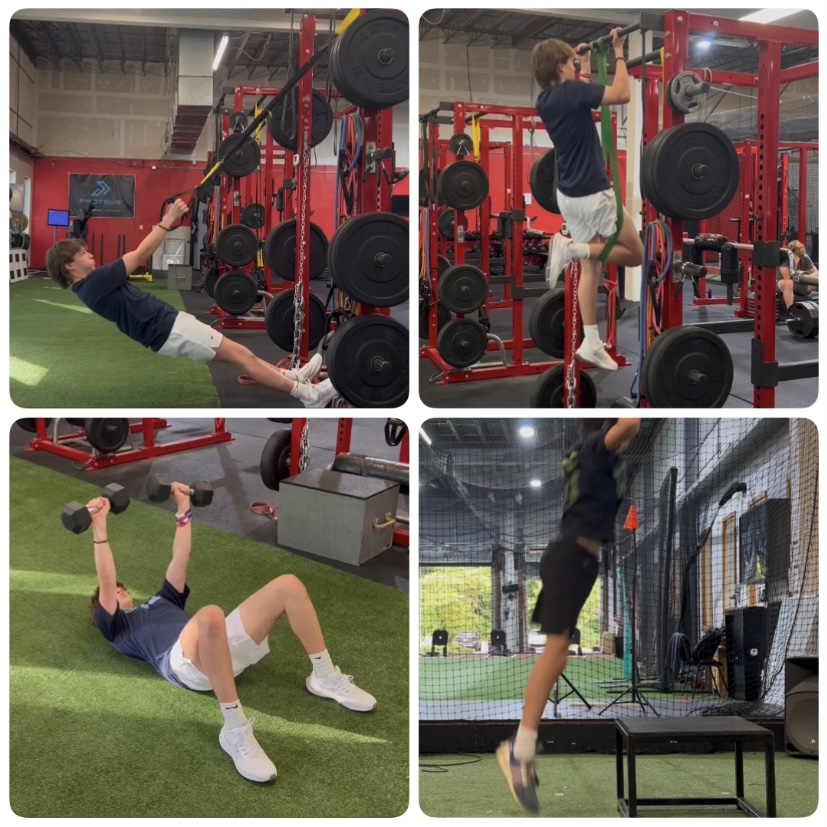
A couple years ago, I wrote an article about youth strength training covering all the related myths and facts. I have been asked several times since then what my young athlete should be doing if he or she is too young for the weight room. There are four basic movements that every young athlete can master using their own body weight as resistance in order to better build his or her athleticism. Becoming athletic takes time at any age, but the good news is that young athletes have a higher window of adaptation at this age, allowing for giant leaps in athleticism over a short period of time.
For our younger athletes, it’s our job to develop and train a multitude of qualities, so we have to fit a lot of information such as strength, speed, and movement into a small period of time. At this age, spoon-feeding these youngsters in order to prevent “mental-overload” is an art, so this is where finding a great program and facility comes into play.
The following movements are absolute necessities:
-
- The hinge
- Upper body push
- Upper body pull
- Hopping or jumping
Here we go, with simple examples for each movement. So, let’s kick it in…
The Hinge
-
- Squats – A little bit of lower body strength goes a long way when it comes to young athletes creating successful positions within their base of support. As young athlete grow, their center of mass (COM) continues to get further and further away from the ground. So, strengthening the glutes and quads with exercises such as body weight squats helps build the necessary strength and stability when trying to make plays in low-positions (such as fielding ground balls, stealing, catching and loading the back leg in pitching). Starting young helps the athlete feel what a proper squat or “hinge” looks and feels like proprioceptively.
- Body Weight Squats – As they get a little older, athletes can progress to KB goblet squats if form on bodyweight is deemed acceptable by an experienced coach.
Reps – 3×10
Body Weight Squat
Goblet Squat
Upper Body Push
Working the front of the body particularly the pec major, pec minor and triceps is crucial in order to create powerful internal rotation, as well as efficient elbow extension when throwing a ball or swinging a bat.
-
- DB Bench Press – This will be the one exercise where I will say that light dumbbells can and SHOULD be used instead of push-ups. Many people think push-ups are the better/safer route but anyone with time in the trenches will tell you that a push-up is one of the most difficult exercises to safely complete for a young athlete. They simply do not possess the adequate core strength or shoulder stability to make it work and more harm is usually done than good, especially to the anterior shoulder. I opt for dumbbell floor presses using 8-15 lb. dumbbells.
Reps – 3×8
Dumbbell Floor Press
Upper Body Pull
Strengthening the posterior (back) side of the upper body targets the powerful lats as well as the mid and lower trapezius (traps). The lats in particular, help control efficient lay back for a pitcher and help scap load in order to help create space with the hands for a hitter, while the trapezius muscles help get the arms overhead more efficiently.
-
- Pull-ups or TRX Rows – Upper body pulling is a tough one at this age so if we are fortunate enough to have coaches that can “spot” the athlete or bands that can be hung and wrapped around the foot or knee, we can utilize pull ups or chin ups. Otherwise a TRX trainer can be hung from a power rack or doorway at home to allow for self- spotting.
Reps – 3x 8-10
Band Chin-up
TRX Row
Hopping or Jumping
When it comes to creating force production and force acceptance, nothing gets it done like hopping and jumping.
-
- Hurdle Hops or Box Jumps – Jump, hop and bound progressions are so valuable to us, for not only teaching our young athletes to produce force, but because it teaches our athletes to accept force as well. Force production is at the TOP of successful ball players ang young ball players are no different. They also go a long way in helping to prevent injury.
Reps – bilateral (2 legs)- 3×6 Unilateral (1 leg)- 3x 6/side
Box Jump
Summary
Starting resistance (strength) and movement training 1-2 x’s/week at a young age has shown to pay big dividends as young athletes mature into their bodies. These include:
-
- Increased performance in their given sport
- Building successful habits in regard to creating good “intent”
- Building confidence on (and off) the field
Remember, young athletes get really good at what they practice. And that includes moving incorrectly.
See ya’ in the gym…
If you’re interested in receiving our blogs, please enter your email address below!
